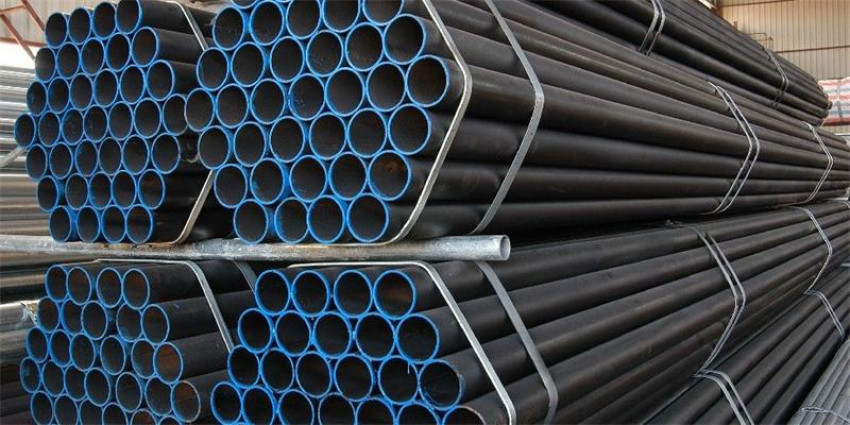
Seamless pipes and tubes are cylindrical hollow metal bars that you can use to transport fluid from one place to another. These pipes have a smooth interior and an exterior surface, which makes them ideal for many industries such as oil and gas, chemical, aviation, pharmaceutical industry, etc. Manufacturers use hot rolling and cold drawing methods to produce these pipes and tubes. Seamless tubes are produced using the cold drawing method. However, although the name suggests cold drawing, pipe manufacturers need to heat-treat the tubes while producing them. These pipes and tubes not only have high dimensional accuracy but also are known for their mechanical structure. Keep reading to explore why pipe fabricators must heat treat the tubes even when cold-drawn.
Purpose of heat treatment:
Manufacturers use heat treatment while producing seamless pipes and tubes because heat improves the structural and mechanical components of the metal pipes. Heat treating the pipes allows the pipe producers to remove any impurities and enhance the mechanical performance of the pipes. Manufacturers produce these pipes using stainless steel, titanium, carbon, and steel alloy. All these metals have impurities when they are in their raw state. Exposing the metals to a specific heat setting for a particular time makes the seamless tubes robust, malleable, and long-lasting. In addition, it eliminates any stress that may have been there during their previous cold treatment.
The manufacturers follow two heat treatment processes for cold-drawn tubes - preliminary and final heat treatment.
Preliminary heat treatment allows pipe manufacturers to get rid of internal stress while improving the processability of the metal tubes and pipes. Also, treating the pipes with preliminary heat is highly important to prepare them for the final heat treatment. Manufacturers primarily follow four heat treatment processes. These are annealing, normalizing, quenching, and tempering. However, some seamless tube manufacturers may include other heating processes, such as case hardening, aging, precipitation straightening, etc., to improve steel quality even more.
Since heat treatment helps prepare the metal pipes with an excellent metallographic structure, this is an unavoidable step in pipe production. Heat treating the pipes and tubes improves their mechanical properties, making them more rigid, wear-resistant, rust-proof, robust, and durable. In addition, heat-treated pipes can withstand more pressure and extreme temperature conditions in comparison with pipes that are not heat treated.
Heat treating the metal and alloy pipes also changes the metal grains, changing their mechanical properties. In addition, heating softens the pipes, making them more malleable. Pipe fabricators need the pipes to be ductile so they can proceed with cold drawing, in which they can change the shapes and sizes of the tubes. Heating also improves the magnetic and electrical properties of seamless tubes and pipes. Sometimes, while manufacturers use hot rolling to produce pipes, gases are trapped inside the metal bars. Final heat treatment releases the trapped gases, making it safe to change the tubes' structure by segregation and removing their coring.
Problems due to improper heating of seamless tubes:
While it may seem to be an easy task, heat-treating pipes, and tubes is crucial. It takes the manufacturers' expertise and experience to conduct heat-treating correctly. If the pipe manufacturers fail to heat-treat pipes and tubes correctly, there are some problems that they will need to deal with. Let us find out some of the most common problems:
● Unqualified hardness is one of the most common problems manufacturers encounter while heat-treating seamless pipes and tubes. It means that the pipes are not hardened equally throughout their length. The defect may happen if the pipe fabricators use an insufficient cooling rate during quenching. Unqualified hardness leads to the poor hardenability of the steel pipes, decarburization, retained austenite, and so on.
● Quenching is the heat treatment that changes the outer diameter of seamless pipes and tubes. The volume of the outer diameter of these pipes increases due to an increase in the diameter. In case the quenching heat treatment is insufficient, the outer diameter, bending degree, and ovality are out of tolerance.
● Uneven heating causes the pipes to bend instead of the pipes being straight. Pipe seamless tube manufacturers must heat the pipes to a specific temperature (550°C) to straighten the curved outer and inner diameter.
● Another common issue that most pipe producers must deal with is steel pipe cracking. The problem takes place when the pipes are cooled or heated too fast. The outer diameter cools down while the inner diameter is still warm, and vice versa. As a result, the pipes develop cracks due to uncontrolled thermal distress.
● Sometimes improper handling of the pipes may lead to scratches on the outer surface of the pipes. As you know, seamless pipes have smooth outer and inner surfaces. Hence, the hard injuries show on the surface prominently. The most common reasons for the problem are improper sliding of the pipes, faulty roller tables, and defective tools.
● Overheating or burning is yet another issue that pipe producers encounter. Overheating causes the surface of the pipes to burn and causes the pipes to oxidize. Also, overheating can change the mechanical and structural composition of the raw materials, which can lead to compromised structural integrity of the pipes.
● If the heating furnace that the manufacturers use is not sealed correctly, air easily enters the furnace. As a result, the protective gas used during heat treatment oxidizes and weakens the pipes.
● Using an improper quenching medium can lead to cracks in the seamless tubes and pipes. Also, the pipe fabricators must save time moving from one step to another, such as tempering, quenching, annealing, etc.
Wrapping it up:
Heat treatment improves the structural and mechanical composition of steel pipes and tubes. There are two types of heat treatments, preliminary and final heat treatment. Heat treating the pipes twice makes them stronger, improves their flexibility, eliminates their residual stress, removes stored gases, makes them wear-resistant, and so on. There are different processes that the manufacturers follow to heat-treat steel and alloy pipes, including quenching, tempering, annealing, normalizing, etc.
Even though heat treatment is an unavoidable step in manufacturing seamless tubes and pipes, producers must pay attention to the process so that they avoid making common mistakes that can compromise the integrity of the pipes. From choosing the correct quenching material to avoiding overheating, manufacturers need to pay close attention to some minute details.
Heat-treating cold-drawn tubes is not only necessary but also an unavoidable step. Heat treating the tubes adds strength and durability, making them the ideal choice for many industries.





